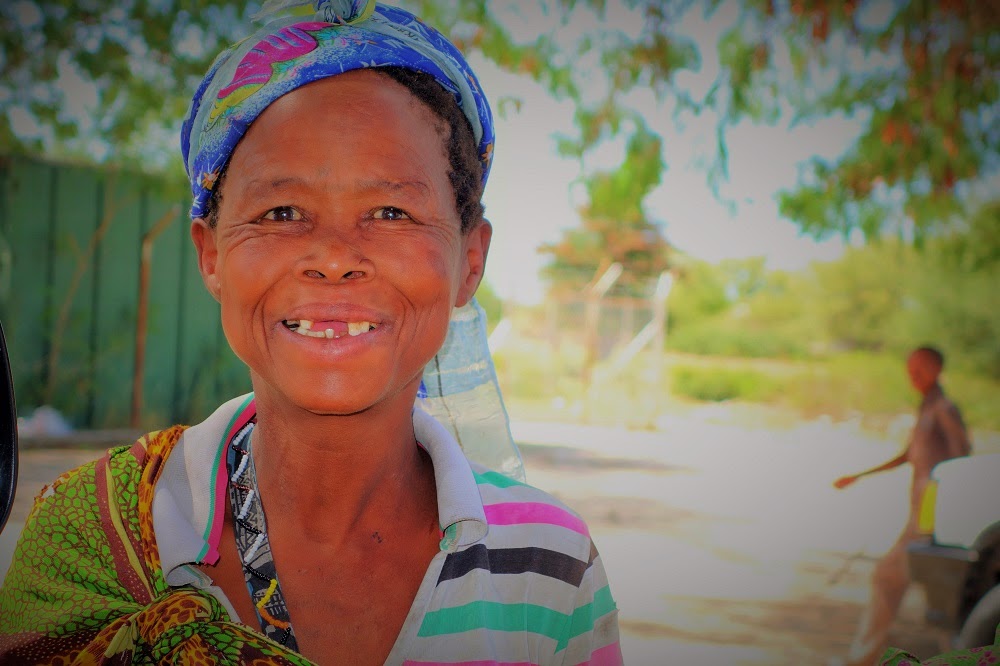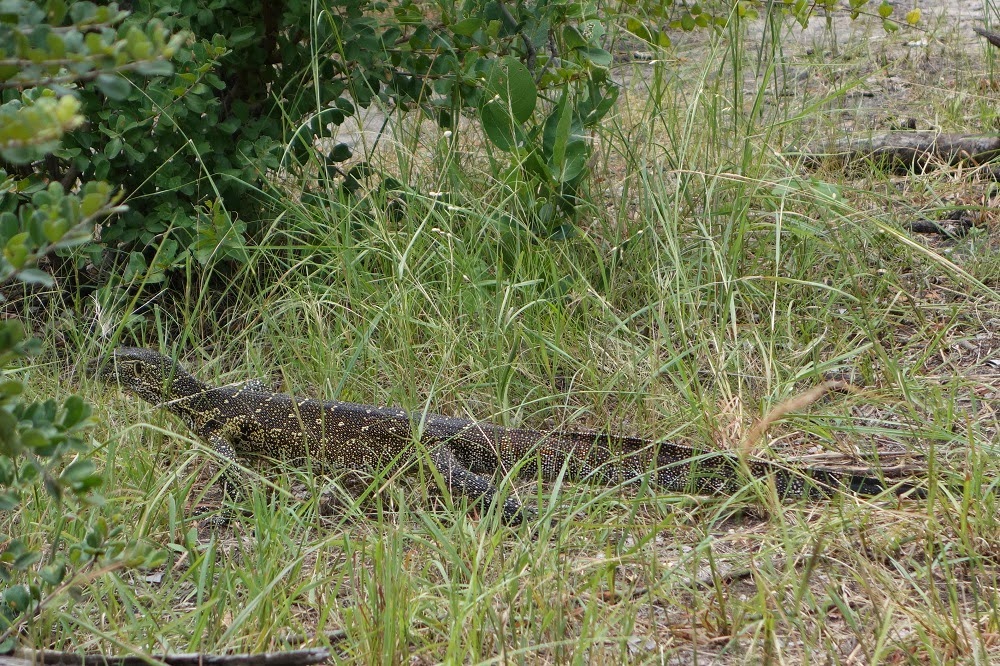Thursday 17th March, The Skeleton Coast
We left Kaokoland four days ago and have been making our way
south towards the Skeleton Coast. Driving out of Kaokoland and seeing this
unusual landscape at a different time of the day to when we drove in was once
again totally captivating. As we drove alongside and at times inside dry
riverbeds, we kept a constant lookout for the elusive desert elephants but
unfortunately we did not see them.
On our second day of travelling south we came over a hill to
find Ian and Heather stranded in a river bed. Although the water wasn’t very
deep, the sand was very soft and Ian’s front wheels were well and truly
embedded in it.
So this time the 'big toys' did come out, first the tow rope
which snapped almost as soon as Don was reversing and then the winch which managed
to pull Ian out. Luckily the water level wasn’t rising which is something that
can happen very suddenly following rain further upstream. That night we stayed
at a camp in the far south of Kaokoland where Ian and Heather had encountered
the desert elephants three years ago.
Ian had gone for a stroll while Heather was sleeping and
when he came back to their truck with Heather sleeping in it, it was surrounded
by the elephants which were feeding off the tree the truck was parked under. It
must have been magic! Sadly we found out that the elephants had left this area
two weeks ago and were on their way south in search of water.
We continued towards the Skeleton Coast spending an
afternoon and the night at our last game reserve, called Palmweg Desert Rhino
Reserve. Driving through the park at five miles per hour with temperatures again
in the forties and the landscape comprising almost entirely of sun-reflecting
red rock and not much else, on top of that a hot wind blowing (not unlike
having your hair dryer blowing into your face), Heather and I reached a bit of a
melting point and were LONGING for cooler temperatures.
The next morning our wish came true! We only had a couple of
hundred kilometres to go before reaching the entrance to the skeleton coast. As
we drove closer to the Atlantic the temperature dropped from 38 degrees to 17
degrees within a couple of hours and when we reached our camp for the night we
were ‘freezing’. The landscape was pretty bleak and eerie and with a
combination of lingering fog and a constant wind blowing it felt more hostile
than anything I have encountered on this trip.

We drove south along the coast the next day stopping at a
couple of ship wrecks. The San people call this region ‘The land God made in
anger’ and early Portuguese sailors called this coast ‘The Sands of Hell’ due
to its treacherous coastline. If you survived being washed ashore (more than
100 ships have run aground on this coastline) you then faced a walk of at least
60 km inland through hot dusty desert. To add to the agony, lakes appearing at
regular intervals on the horizon turned out to be nothing more than mirages.
Needless to say, it was a walk to certain death, hence the
name ‘Skeleton Coast’.
We spent pretty much a whole day travelling south along the
coast, the foggy bleakness only interrupted by stopping at a Cape fur seal
colony which has existed in this location for over 400 years. The pups were
about three months old (they are all born in mid-December) and it was a real
delight to watch them. All in all, this colony is populated by 26,000 seals and
the smell and sound is something to be experienced to be believed.
The colony also marks the spot where the first European, the
Portuguese navigator Diogo Cao, set foot on the cost of south-western Africa in
1486.
Saturday, 21st March
We are now on our way to the Fish River Canyon which is the
last item on our itinerary before heading back into SA. Following our drive
along the Skeleton Coast we spent a couple of nights in a town called Swakopmund.
For the first time we had to camp in a town campsite and it felt strangely
claustrophobic having other travellers around us. Thus far we have been mostly
on our own in the various camps and even on the roads. The town itself has a
distinct German feel to it due to its architecture and the German tourists here
and were it not for the palm trees you could think you were in a little town in
Bavaria.
We treated ourselves to an evening in a Bierkeller drinking
Weizenbier but since we were by the sea we opted for the fish rather than the
Schweinehaxe mit Sauerkraut.
Before heading inland we made one last stop on the coast to
visit a flamingo colony which was a real treat since they were right up close.
Liam, you would have loved this! We reckon there must have been about a
thousand flamingos, all moving and changing direction in unison as if performing some
magic dance.

We then headed east towards the Namib desert and an area
called Sossusvlei. This area is thought to be one of the oldest landscapes on
earth and is famous for having Namibia’s highest sand dunes, some reaching as
high as 300 meters. The sand forming the dunes is thought to have
originated in the Kalahari desert
millions of years ago, was washed down towards the Atlantic by the Orange river
and swept northwards by the Benguela current to be deposited along the coast.
The best time to see the dunes is at sunrise when the reflection of the sun
makes the dunes appear in all different shades of red and orange. When we left
our camp it was still dark and although there was some cloud cover when the sun
did come up the views were stunning. Again, not something you can capture in a
photo but here is one anyway
Sunday 22nd March, The Fish River Canyon
This 160 km long and 27 km wide gash in the earth is
incredibly impressive but the total lack of plant life and incredible heat
reflected off the exposed rock surfaces is quite startling. The canyon has been
carved out of rock by the Fish river and is thought to be approximately 400
million years old, half as old as the earth itself! Now days the river is no
more than a trickle.
The guidebook recommends a four day hike through the base of
the canyon to ‘live it’ rather than ‘see it’. With the wildlife here consisting
mostly of snakes, spiders and scorpions I was relieved when there was no
interest expressed in a hike. Phew!
By the way, we stayed in a camp a couple of nights ago which
had a tame springbok running around the camp site and which took a real liking
to Don…
 |
| The look on the poor animal's face when we left... |

























































